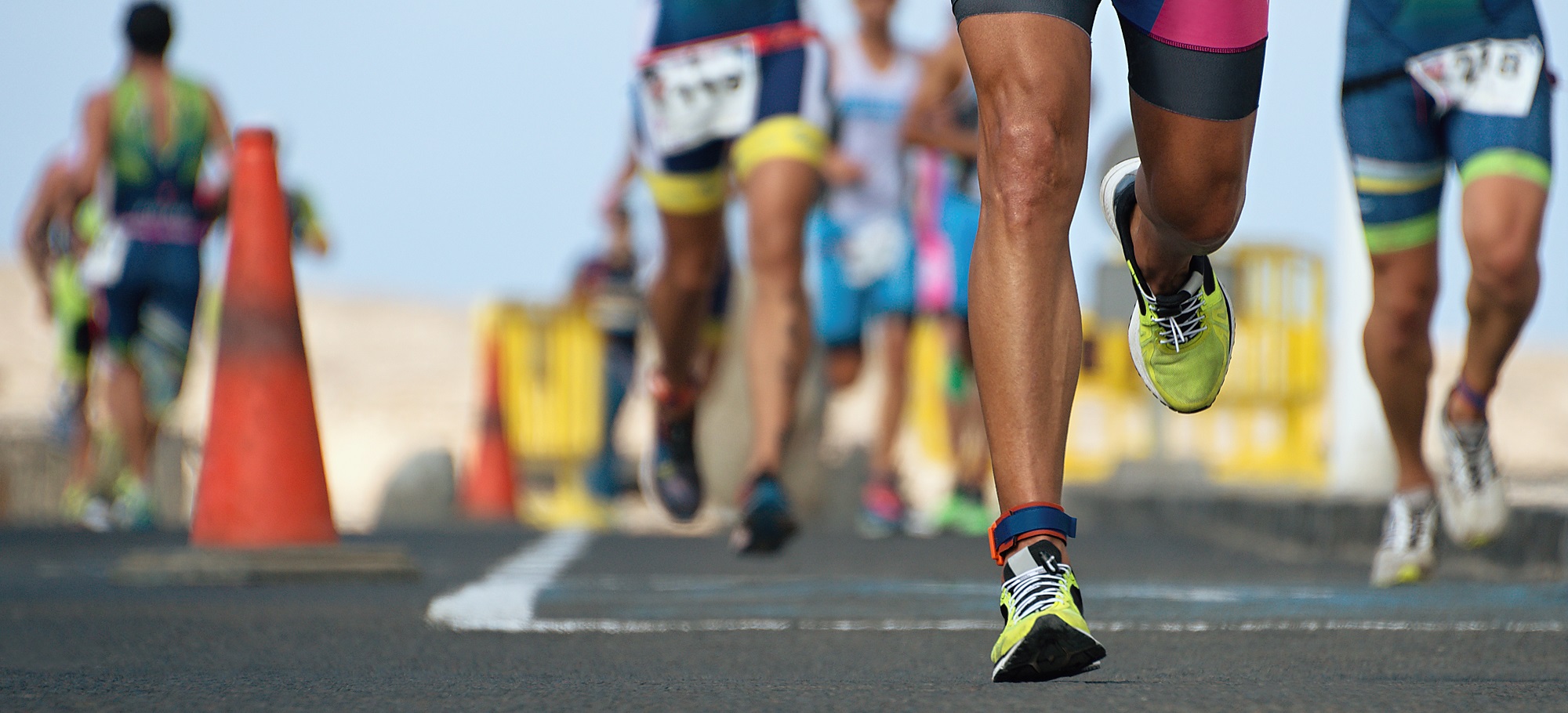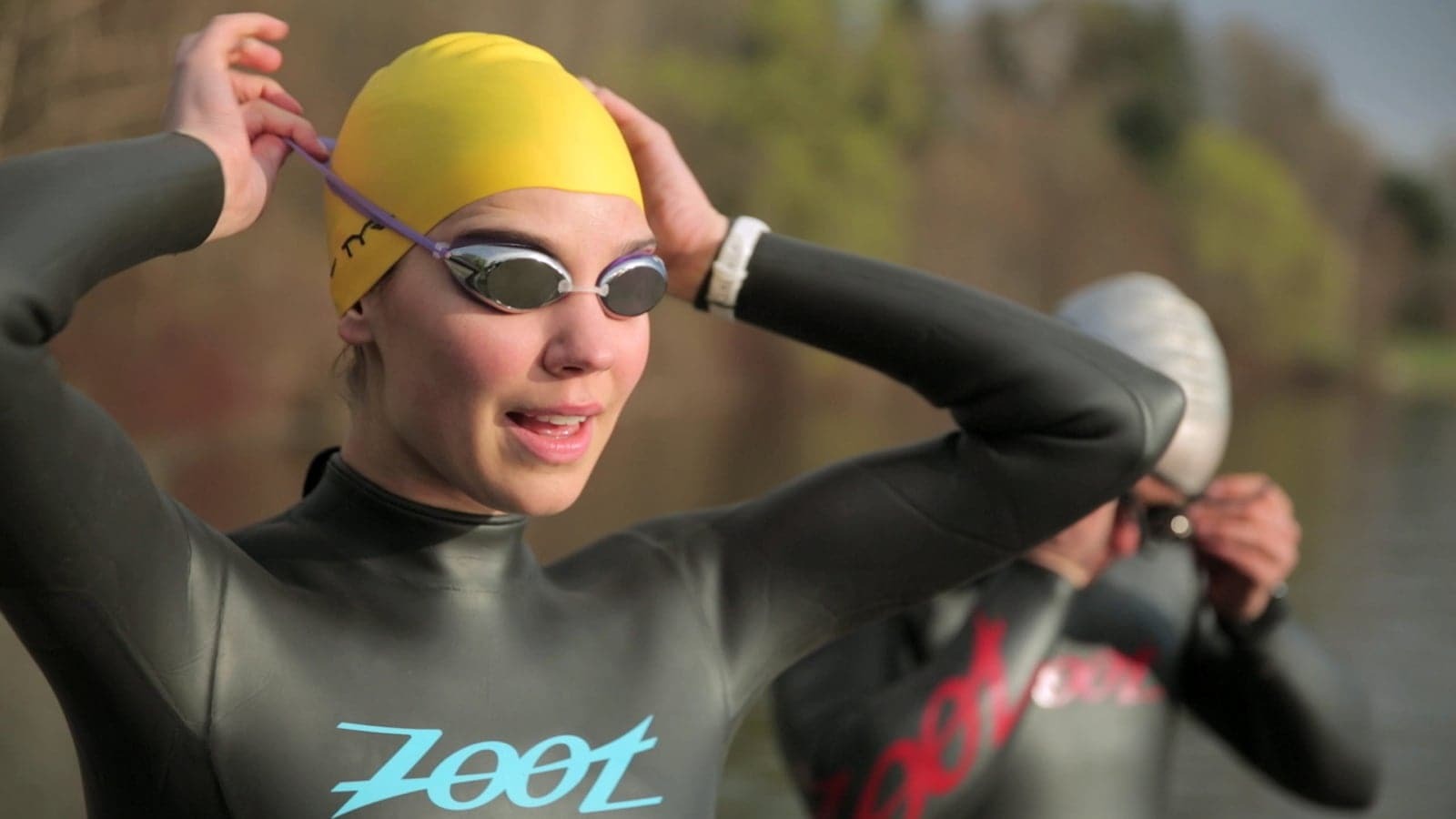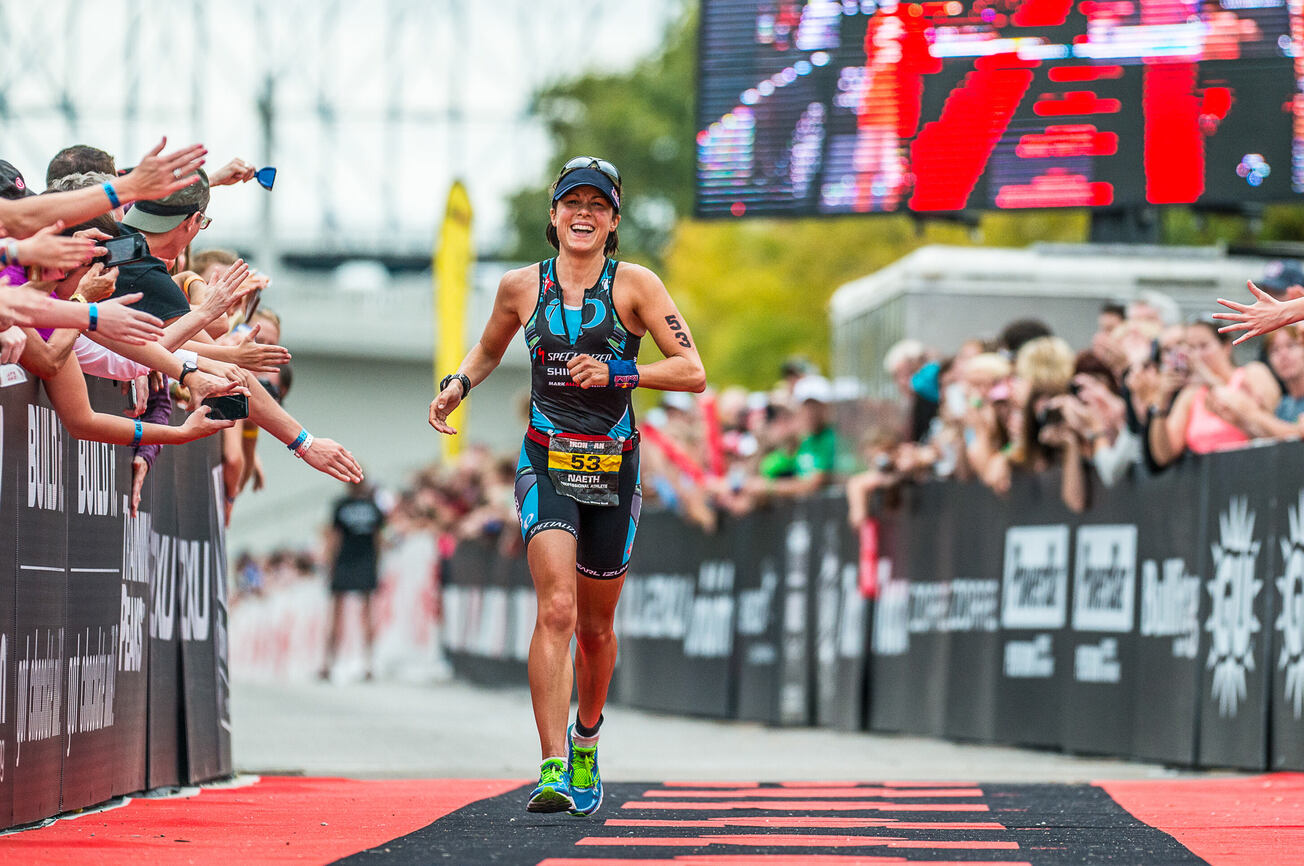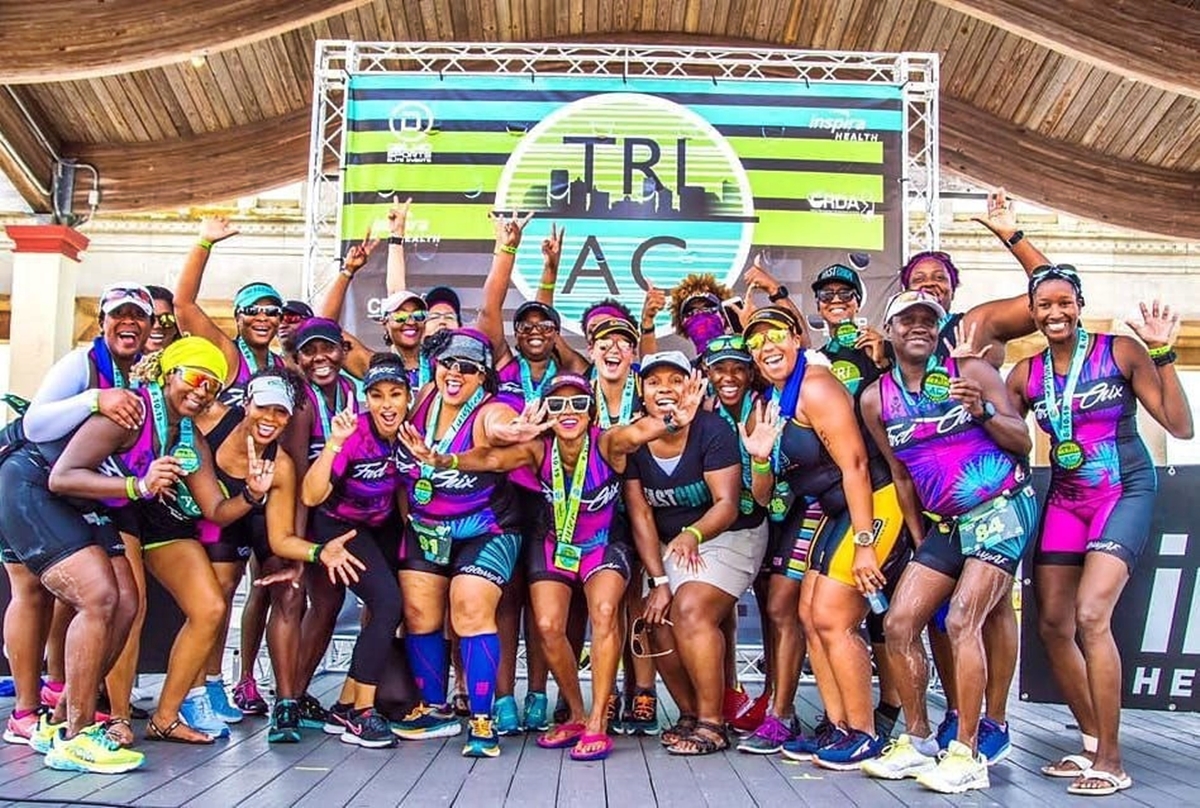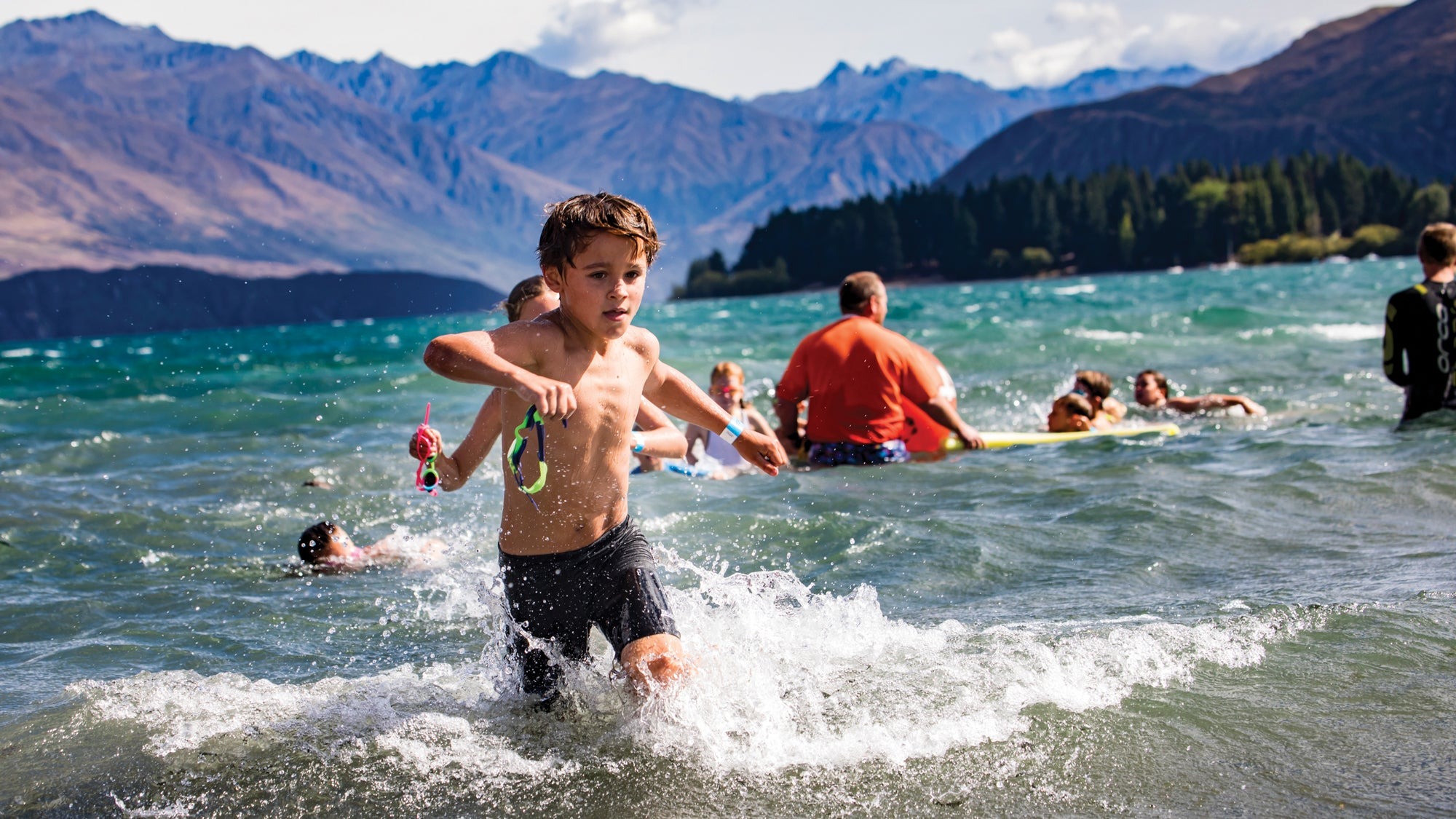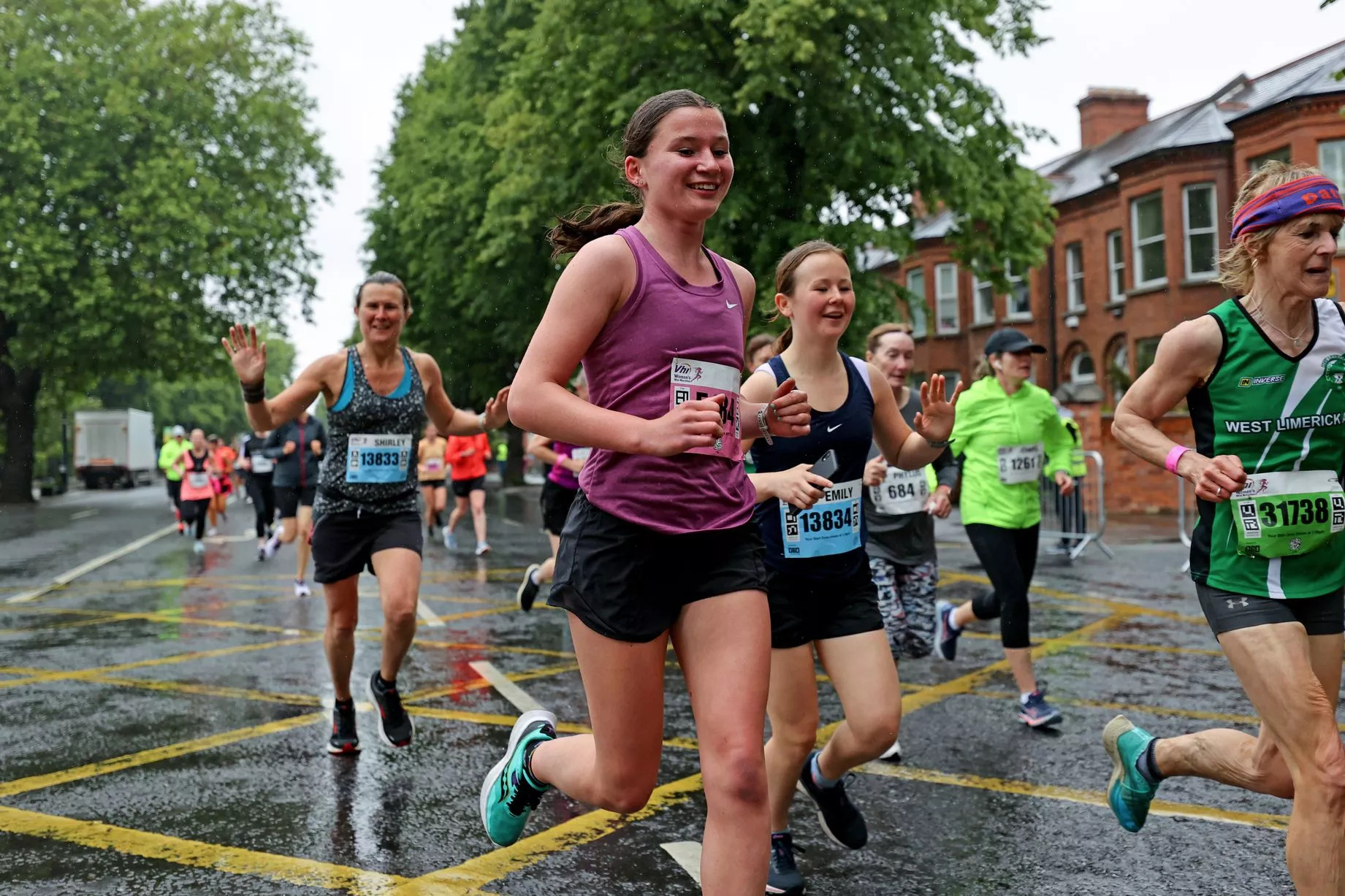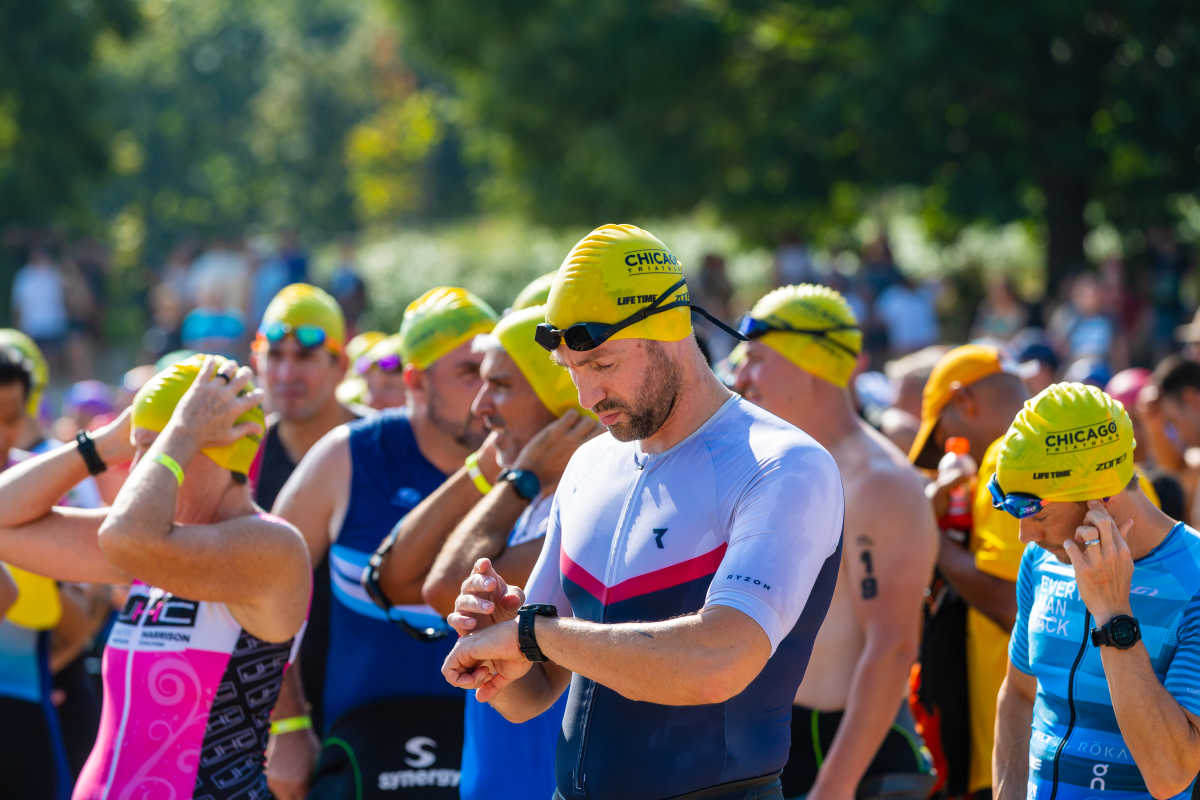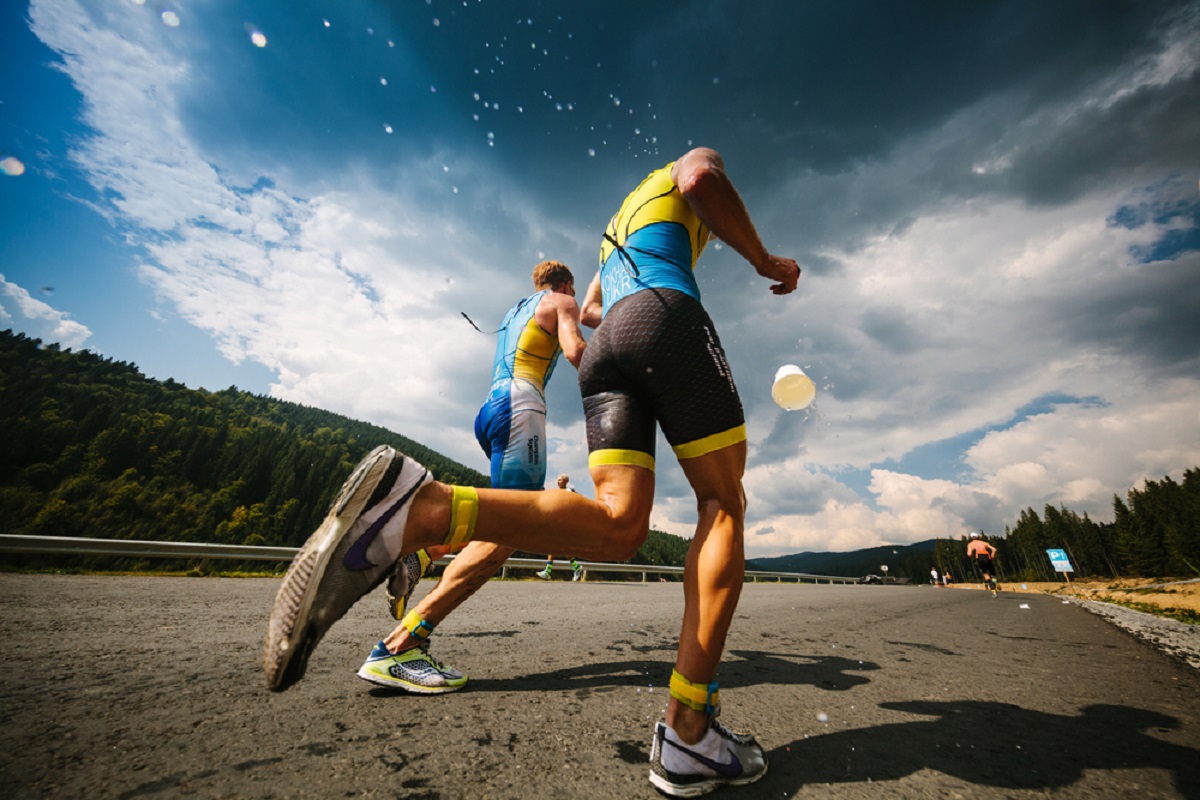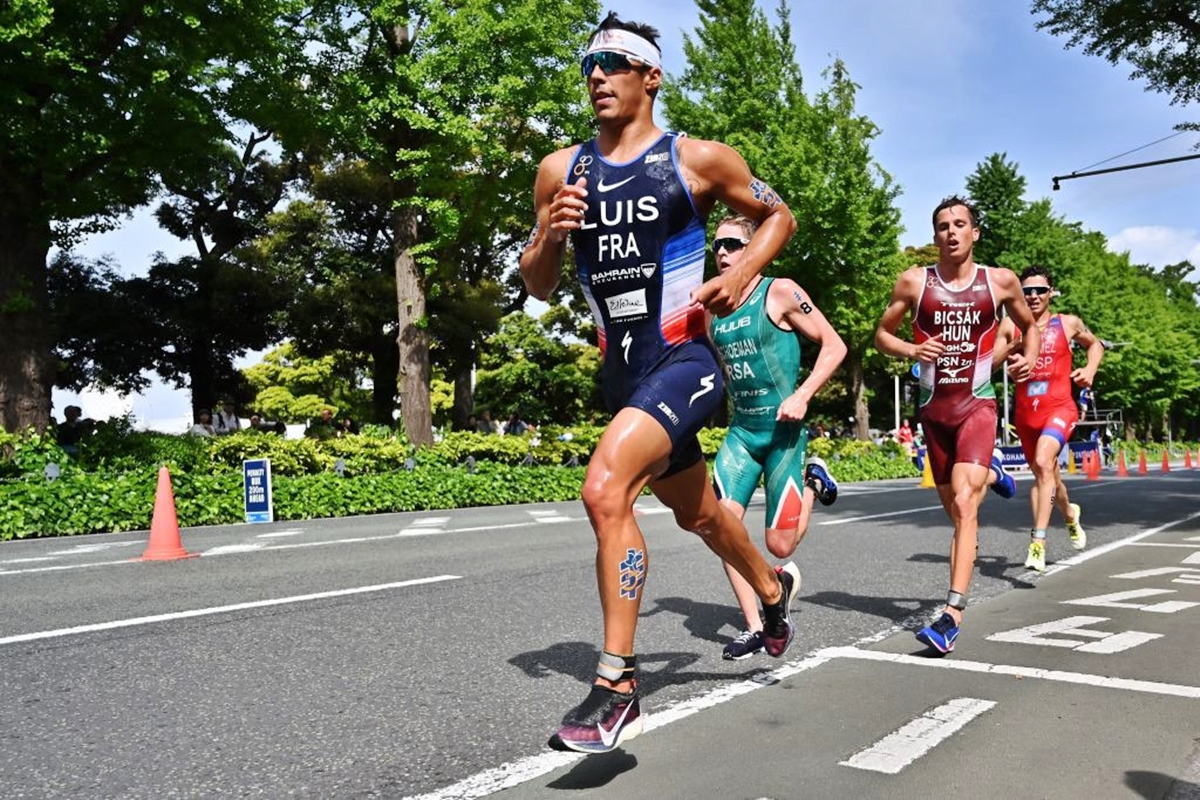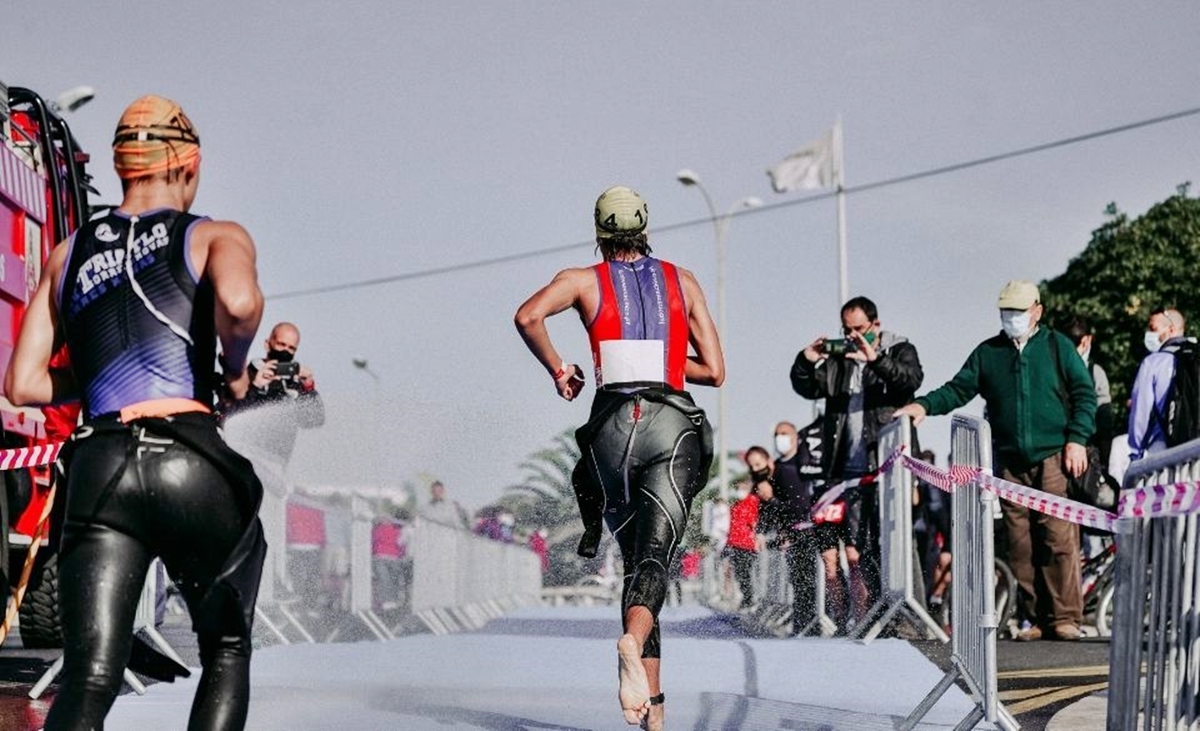

Featured
What Does A Mini Triathlon Consist Of
Modified: January 2, 2024
Discover what a mini triathlon consists of and get featured in this exciting endurance race that combines swimming, cycling, and running.
Introduction
Welcome to the exciting world of mini triathlons! These multi-sport events are a great way to challenge yourself, push your limits, and experience the thrill of three different disciplines in one exhilarating race. Whether you’re a seasoned athlete or a newbie looking to take on a new fitness challenge, participating in a mini triathlon can be a rewarding and satisfying experience.
A mini triathlon, also known as a sprint triathlon, is a shorter distance triathlon that consists of three disciplines: swimming, cycling, and running. The distances for each discipline may vary, but typically, a mini triathlon involves a 400 to 750-meter swim, a 10 to 20-kilometer bike ride, and a 5-kilometer run. While the distances are shorter compared to the standard Olympic or Ironman triathlons, they still require a certain level of fitness and preparation.
Mini triathlons are often considered a gateway to longer-distance triathlons, allowing participants to get a taste of the sport before committing to more demanding races. They are also a popular choice for individuals looking to improve their overall fitness, challenge themselves, and set new personal goals.
What sets mini triathlons apart from their longer counterparts is the emphasis on speed and intensity. While longer races require endurance, mini triathlons demand a higher level of effort and intensity throughout each discipline. This makes them a great option for those who enjoy a faster-paced, adrenaline-filled race experience.
Another attractive aspect of mini triathlons is that they are more accessible to a wider range of individuals. The shorter distances make them less intimidating for beginners or individuals who may have time constraints but still want to be a part of the triathlon community. They also attract participants from various age groups, from young aspiring triathletes to seasoned veterans looking to challenge themselves in a shorter race.
Mini triathlons are not only a physical test but also a mental one. They require strategic planning, efficient transitions between disciplines, and the ability to push through fatigue and discomfort. Proper training, nutrition, and equipment choices are essential to ensure a successful and enjoyable race.
In the sections to follow, we will dive deeper into each discipline of a mini triathlon, discuss the necessary equipment, training tips, and nutrition considerations to help you prepare for your upcoming mini triathlon adventure.
Swimming
The swimming portion of a mini triathlon is often the first discipline and sets the tone for the rest of the race. It is crucial to have a proper swimming technique and build endurance for a successful swim leg.
Swimming distances in mini triathlons typically range from 400 to 750 meters, which may seem daunting for beginners. However, with consistent practice and training, even novice swimmers can conquer the swim portion of the race.
One important aspect of swimming in a triathlon is open water navigation. Unlike swimming in a pool, where you have clear lines and walls to guide you, open water swimming requires sighting techniques to navigate your way in the open water. Practice swimming in open water before the race to get comfortable with the environment.
A wetsuit is often used in open water swimming to provide buoyancy and insulation. It is important to ensure the wetsuit fits well and doesn’t restrict your range of motion. Practice swimming in your wetsuit during training sessions to get accustomed to the feeling.
Transitioning from the swim to the bike leg is an important aspect to consider. Practice taking off your wetsuit quickly and efficiently to minimize transition time. Some triathletes prefer to wear a trisuit, which is a one-piece outfit that can be worn throughout the entire race, eliminating the need for changing clothes during transitions.
To improve your swimming endurance, include regular pool sessions in your training routine. Focus on building your cardiovascular fitness, maintaining a steady breathing pattern, and improving your stroke technique. Incorporate interval training to increase your speed and simulate the race intensity.
Swimming drills can also be beneficial in improving your swimming efficiency and technique. Work with a swim coach or join a masters swim program to get professional guidance and feedback on your form.
Remember to practice open water swims as part of your training. This will help you get comfortable with swimming in less controlled environments, deal with waves or currents, and practice sighting techniques.
During the race, swim at a pace that is comfortable for you. Avoid starting too fast, as it can lead to burning out early on. Find a rhythm and stick to it, keeping in mind that you still have the bike and run legs to complete.
Cycling
The cycling leg of a mini triathlon is where you can really make up time and gain momentum. It is important to have a well-maintained bike, proper cycling technique, and efficient gear changes for a successful ride.
Mini triathlons typically involve a 10 to 20-kilometer bike ride, depending on the specific race. Whether you’re a seasoned cyclist or a newbie, preparation and training are key to performing well in this discipline.
First and foremost, ensure your bike is in good working condition. Check the tire pressure, brakes, gears, and overall bike fit. A bike that suits your body and riding style will make a significant difference in your performance.
During training rides, focus on building your endurance and stamina. Gradually increase your mileage and practice riding at different intensities. Include hill training to prepare for any inclines you may encounter during the race.
Efficiency in gear changes is crucial when transitioning from flat roads to climbs or descents. Practice shifting gears smoothly and anticipate gear changes ahead of time. This will help maintain a consistent cadence and prevent unnecessary strain on your legs.
When riding in a triathlon, it is important to be familiar with the rules and regulations for cycling. Drafting, which is riding closely behind another cyclist to take advantage of their slipstream, may be prohibited in certain races. Be mindful of the rules and maintain a safe distance from other participants.
Don’t forget about nutrition and hydration during the bike leg. Plan your fueling strategy and bring snacks or energy gels to replenish your energy stores. Stay hydrated by drinking water or sports drinks at regular intervals.
Transitions are crucial in a triathlon, and the transition from bike to run can be challenging. Practice dismounting your bike smoothly and quickly. Remember to remove your helmet and put on your running shoes before heading out for the run leg.
Include brick workouts in your training routine to simulate the feeling of running after cycling. By practicing running immediately after a bike ride, you can adapt to the change in muscle activation and get used to the leg fatigue that often comes with this transition.
During the race, maintain a steady pace on the bike while being mindful of energy conservation for the run leg. Take advantage of downhill sections to rest and recover, but push yourself on flat or uphill sections to maintain a good average speed.
The cycling leg of a mini triathlon is an opportunity to showcase your cycling abilities and make up time. With proper training, bike maintenance, and gear management, you’ll be well-prepared for a successful ride.
Running
The running leg of a mini triathlon is the final discipline and requires both physical endurance and mental strength. It is essential to have a solid running foundation, efficient running form, and proper pacing to finish strong in the race.
In most mini triathlons, the running distance is 5 kilometers. While it may be the shortest leg of the race, it can still be challenging, especially after completing the swim and bike legs.
During your training, incorporate regular running sessions to improve your cardiovascular fitness and build endurance. Gradually increase your mileage and practice running at race pace. Include interval training and tempo runs to improve your speed and running efficiency.
Form is crucial when it comes to running. Focus on maintaining an upright posture, relaxed shoulders, and a slight forward lean. Strike the ground with a midfoot or forefoot landing to minimize stress on your joints and maximize energy transfer.
During the race, find a comfortable running pace that allows you to maintain a steady rhythm. Avoid going out too fast at the start, as it can lead to early fatigue. Pace yourself and save some energy for a strong finish.
Hydration is key during the run leg. Take advantage of aid stations along the course to grab water or sports drinks. Practice drinking on the run during your training to ensure you can stay hydrated without slowing down.
Mental preparation is crucial in the running leg, especially when fatigue sets in. Stay focused and maintain a positive mindset. Break the run into smaller, manageable segments and set mini goals for yourself along the way.
Keep an eye on your running form and make adjustments if needed. Check your posture, arm swing, and cadence periodically to ensure you’re running efficiently and minimizing unnecessary energy expenditure.
Transitions between the bike and run can be challenging, as your legs may feel heavy and fatigued. Practice transitioning from cycling to running during your training by performing brick workouts. This will help your body adapt to the sensation and improve your transition time.
Lastly, enjoy the run! Embrace the atmosphere, soak in the cheers from the crowd, and celebrate the fact that you’re in the final leg of your mini triathlon. Push yourself to finish strong and cross that finish line with a sense of accomplishment.
Remember, the running leg is where the race often comes down to mental grit and determination. Stay focused, stay strong, and give it your all as you sprint towards the finish line.
Transitions
Transitions in a mini triathlon are the critical moments between each discipline where every second counts. A smooth and efficient transition can make a significant difference in your overall race time. Proper preparation and practice are essential to master the art of transitions.
There are two types of transitions in a triathlon: T1 (swim to bike) and T2 (bike to run). These transitions involve changing gear, clothing, and mentally shifting gears to switch from one discipline to the next.
During the swim-to-bike transition (T1), time is of the essence. As soon as you exit the water, focus on taking off your wetsuit quickly and efficiently. Practice beforehand to master the technique of peeling off the wetsuit while on the move.
Once your wetsuit is off, locate your bike in the transition area and put on your helmet. Make sure your helmet is securely fastened before mounting your bike. Try to have your helmet and sunglasses arranged in a way that allows for a smooth transition.
Consider using elastic laces in your running shoes, which eliminates the need for tying and allows for a quicker transition. Place your shoes strategically near your bike, ensuring they are easy to slip on when you’re ready to run.
Having a well-organized transition area with all your gear laid out in a logical order will make the transition process much smoother. Practice your transitions during training sessions to become efficient and familiar with the sequence of actions.
During the bike-to-run transition (T2), focus on dismounting your bike smoothly and safely as you approach the designated dismount area. Rack your bike and remove your helmet before putting on your running shoes.
If needed, quickly grab a sip of water or a sports drink before starting the run. Keep your race bib handy to pin it on while running if it is not already attached to your trisuit.
Mental preparedness is just as important as physical preparedness during transitions. Visualize and rehearse the transition process in your mind before the race to eliminate any unnecessary delays or confusion.
Reducing your transition time can give you a competitive advantage. Practice quick gear changes and develop a sense of urgency when transitioning from one discipline to the next. However, it’s important to find a balance between speed and ensuring that you have all the necessary equipment and gear properly secured.
Lastly, stay calm and composed during transitions. The adrenaline and excitement of the race can sometimes lead to unnecessary rush and mistakes. Take a moment to collect yourself, breathe, and then proceed with each transition.
Remember, transitions are where races can be won or lost. By practicing your transitions, being organized, and executing each step with precision and efficiency, you can gain valuable seconds that may make all the difference in your overall race performance.
Equipment
Having the right equipment for a mini triathlon is crucial for a comfortable and successful race. From swim gear to running shoes, each piece of equipment plays a significant role in your overall performance. Here are the essential items you’ll need for each discipline:
Swimming:
- Swimsuit or triathlon-specific wetsuit: Choose a well-fitting swimsuit that allows for freedom of movement in the water. Alternatively, consider investing in a triathlon-specific wetsuit that provides buoyancy and insulation in open water.
- Goggles: Opt for goggles that fit snugly and provide clear vision. Consider tinted lenses for outdoor races to reduce glare.
- Swim cap: Some races may provide swim caps, but it’s a good idea to have your own as a backup. Choose a cap that fits securely and comfortably.
- Earplugs and nose clips (optional): If you’re sensitive to water entering your ears or nostrils, consider using earplugs and nose clips for added comfort.
Cycling:
- Bike: Choose a road bike, triathlon bike, or a hybrid bike depending on your preference and budget. Ensure that it is well-maintained, fits your body properly, and is suitable for the race.
- Bike helmet: Safety is paramount, so invest in a good-quality bike helmet that meets safety standards. Make sure it fits snugly and is securely fastened.
- Cycling shoes: Opt for cycling shoes that are compatible with your bike’s pedal system. Consider getting shoes with a quick fastening system, such as Velcro straps or boa dials, to facilitate faster transitions.
- Cycling jersey and shorts: Choose moisture-wicking and breathable clothing to keep you comfortable during the ride. Look for jerseys with pockets to store race essentials such as energy gels or snacks.
- Sunglasses: Protect your eyes from the sun, wind, and debris by wearing sunglasses with UV protection. Look for models that are lightweight and designed for sports activities.
Running:
- Running shoes: Invest in a pair of well-fitting and supportive running shoes that are appropriate for your foot type and running style. Consider lightweight racing shoes for faster paced runs.
- Running socks: Opt for moisture-wicking socks that provide cushioning and reduce friction to prevent blisters.
- Running attire: Choose breathable and moisture-wicking clothing that allows for freedom of movement. Consider wearing a race belt to attach your race bib.
General:
- Timing device: Invest in a sports watch or a timing device to track your overall race time and splits for each discipline.
- Transition mat/towel: Having a small mat or towel in your transition area can help keep your gear organized and provide a clean surface for changing.
- Water bottle and nutrition: Stay hydrated during the race by carrying a water bottle on your bike or handheld bottle for the run. Pack energy gels, bars, or other snacks to fuel your body during the race.
- Race bag: A lightweight and durable bag can hold all your race essentials and make it convenient to transport your gear to and from the race venue.
Remember to test all equipment before race day to ensure a proper fit and functionality. Practice using your gear during training sessions to become familiar with it and make any necessary adjustments or upgrades well in advance of the race.
Having the right equipment tailored to your needs and preferences can enhance your comfort, performance, and overall enjoyment of the mini triathlon.
Training
Proper training is key to preparing your body and mind for the challenges of a mini triathlon. It’s important to adopt a well-rounded training program that focuses on each discipline individually, as well as incorporating brick workouts and rest days for recovery. Here are some training tips to help you prepare:
Swim Training:
- Improve Technique: Work with a swim coach or join a masters swimming program to refine your swimming technique. Focus on proper body positioning, efficient arm strokes, and rhythmic breathing.
- Build Endurance: Include regular pool sessions to build swimming endurance. Gradually increase your distance and incorporate interval training to improve speed and stamina.
- Open Water Practice: As mini triathlons often take place in open water, practice swimming in open water to get comfortable with the environment, waves, and sighting techniques.
Cycling Training:
- Build Base Fitness: Start with shorter rides and gradually increase your mileage to build endurance. Focus on maintaining a steady cadence and improving your pedaling technique.
- Incorporate Hills: Include hill training sessions to prepare for any inclines you may encounter during the race. Practice shifting gears efficiently and adapt to different terrains.
- Interval Training: Include interval workouts to improve your speed and cardiovascular fitness. Alternate between high-intensity efforts and recovery periods to challenge your body and mimic race conditions.
Running Training:
- Gradual Progression: Start with shorter distances and gradually increase your mileage to avoid overexertion and reduce the risk of injury. Focus on building endurance and establishing a solid running base.
- Interval Training: Incorporate interval training to improve speed and stamina. Alternate between periods of high-intensity running and recovery to enhance your running efficiency.
- Brick Workouts: Practice running immediately after cycling in order to adapt to the unique sensation of running with fatigued legs. Start with shorter distances and gradually increase the run segment.
Rest and Recovery:
- Include rest days in your training schedule to allow your body to recover and prevent overtraining. Rest is just as important as training and helps prevent injuries and burnout.
- Get Enough Sleep: Aim for 7-9 hours of quality sleep each night to promote recovery and optimize performance.
- Proper Nutrition: Fuel your body with a balanced diet that includes carbohydrates, proteins, and healthy fats. Stay hydrated and prioritize post-training nutrition to aid in muscle recovery.
Gradually increase the intensity and duration of your training sessions over time, allowing your body to adapt and build strength. Listen to your body and adjust your training as needed to prevent injuries or burnout.
Keep a training log to track your progress, set goals, and stay motivated. Consider working with a coach or joining a triathlon club for guidance, support, and accountability throughout your training journey.
Remember, consistency is key. Stick to your training plan, stay committed, and trust the process. With dedication and perseverance, you’ll be well-prepared to conquer your mini triathlon challenge.
Nutrition
Nutrition plays a vital role in supporting your training, performance, and recovery for a mini triathlon. Proper fueling before, during, and after the race is essential to optimize your energy levels and maintain endurance. Here are some nutrition tips to help you perform your best:
Pre-Race Nutrition:
- Carbohydrate Loading: In the days leading up to the race, increase your carbohydrate intake to ensure your glycogen stores are fully loaded. Focus on consuming complex carbohydrates such as whole grains, fruits, and vegetables.
- Hydration: Begin hydrating well before the race to ensure you are properly hydrated. Drink plenty of water throughout the day leading up to the event.
- Pre-Race Meal: Consume a balanced meal that includes carbohydrates, proteins, and healthy fats 2 to 3 hours before the race. Choose easily digestible foods such as oatmeal, bananas, yogurt, or toast with nut butter.
During the Race:
- Hydration: Drink water or a sports drink at regular intervals during the race to stay hydrated. Aim to consume approximately 150-250ml of fluids every 15-20 minutes, depending on your sweat rate and the race conditions.
- Energy Gels/Chews: Consider using energy gels or chews to provide a quick source of carbohydrates during longer events. These can help maintain energy levels and prevent fatigue.
- Electrolytes: If the race is expected to be hot and you may be sweating heavily, consider consuming electrolyte capsules or drinking sports drinks that contain electrolytes to replenish sodium and other crucial minerals lost through sweat.
Post-Race Recovery:
- Rehydrate: Restore your hydration levels by drinking water or sports drinks immediately after the race. Aim to consume fluids containing electrolytes to replace what was lost during the race.
- Protein for Recovery: Consume a post-race meal or snack that includes a combination of carbohydrates and protein within 30-60 minutes after the race. This will help replenish glycogen stores and aid in muscle recovery and repair.
- Replenish Carbohydrates: Include carbohydrates in your post-race meal or snack to replenish energy stores. Opt for a balanced meal that includes whole grains, lean proteins, and fruits or vegetables.
General Nutrition Tips:
- Balance Your Macronutrients: Consume a well-rounded diet that includes carbohydrates, proteins, and healthy fats. Prioritize whole foods such as fruits, vegetables, lean proteins, whole grains, nuts, and seeds.
- Eat Regularly: Fuel your body with regular meals and snacks throughout the day to maintain energy levels and support optimal performance.
- Listen to Your Body: Pay attention to your hunger and fullness cues. Eat when you’re hungry and stop when you’re satisfied.
- Individualize Your Nutrition: Experiment with different foods and timing to determine what works best for you during training and racing. Consider working with a sports nutritionist for personalized guidance.
Remember, nutrition is a crucial aspect of your overall training and race-day performance. Experiment with different strategies during your training to find what works best for you. Practice your nutrition plan during long training sessions to ensure it works well before implementing it on race day.
Conclusion
Congratulations! You are now equipped with the knowledge and insights to conquer a mini triathlon. Remember, a mini triathlon consists of three disciplines: swimming, cycling, and running. Each discipline requires specific training, proper equipment, and nutrition to excel in the race.
Swimming requires technique, open water practice, and efficient transitions. Cycling demands a well-maintained bike, proper gear changes, and pacing strategies. Running calls for endurance, mental strength, and smooth transitions. Being prepared in all these areas will set you up for success.
Don’t underestimate the significance of transitions – those crucial moments between each discipline. Practice and efficiency in transitions can save you valuable time and ultimately improve your overall race performance.
Proper nutrition is key. Fuel your body with the right balance of carbohydrates, proteins, and healthy fats to optimize energy levels, support training, and aid in recovery. Hydration is equally important, so make sure you drink enough water and electrolytes before, during, and after the race.
Remember to listen to your body, respect your limits, and gradually build your training intensity and volume. Incorporate rest days to allow for recovery and prevent injuries. Find the right balance between pushing yourself and taking care of your body.
Lastly, enjoy the journey. Participating in a mini triathlon is not only a physical test but also an incredible personal accomplishment. Embrace the challenge, the camaraderie among fellow participants, and the sense of achievement as you cross the finish line.
Whether you’re a seasoned triathlete or a newbie venturing into the world of multi-sport events, a mini triathlon offers an opportunity to push your boundaries, achieve new goals, and immerse yourself in an exhilarating endurance experience.
So, lace up your running shoes, strap on your helmet, and dive into the water. The exhilarating world of mini triathlons awaits you. Good luck on your upcoming race, and enjoy the journey of becoming a triathlon finisher!
